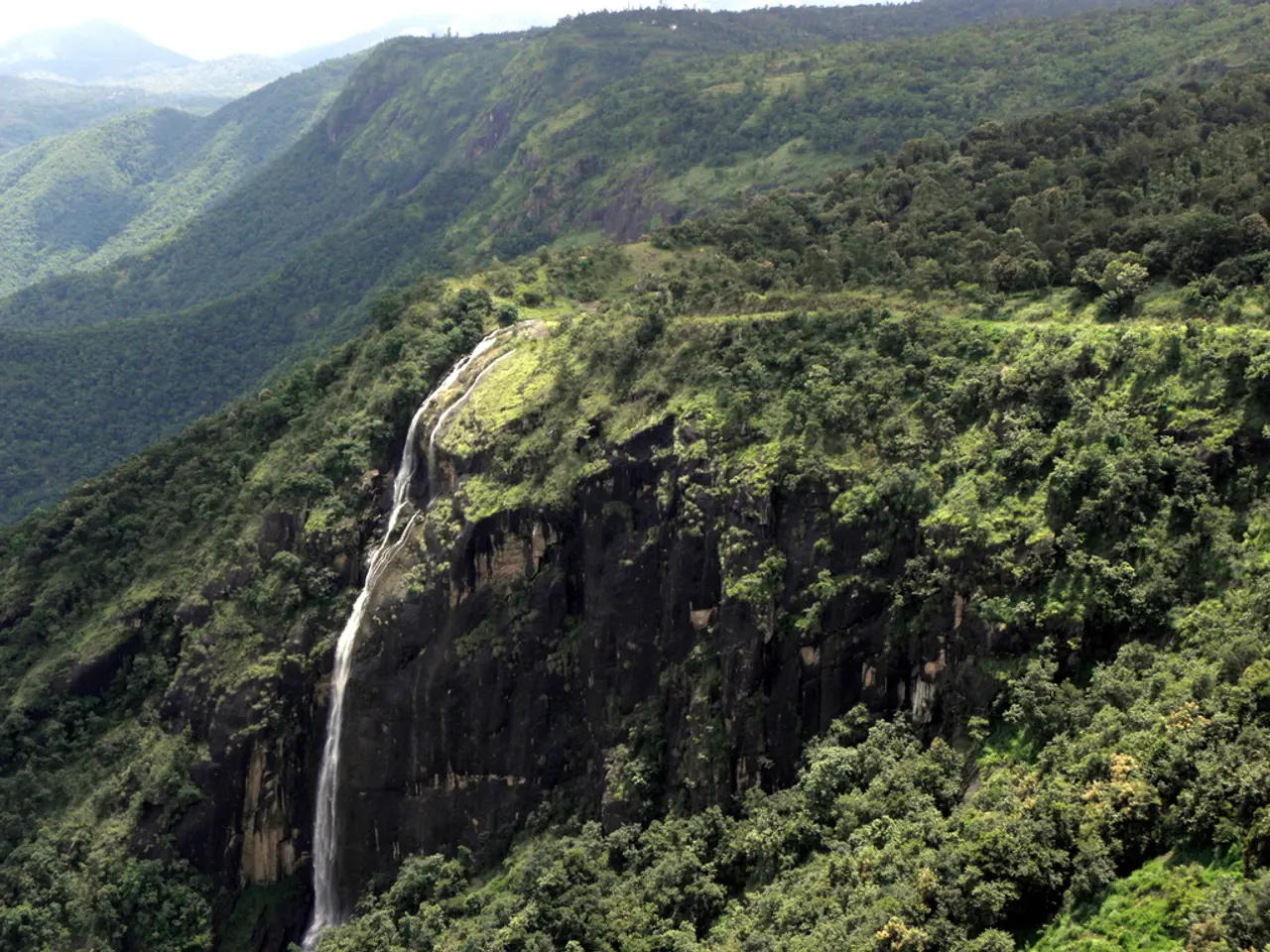Heavy rain-related fatalities surpass 300 throughout the nation, emergency warnings for additional precipitation are issued nationwide
Pakistan is currently experiencing significant rainfall during the monsoon season, increasing the risk of flash floods, glacial lake outburst floods (GLOFs), and landslides in various regions.
From August 5 to 10, 2025, heavy rainfall has been recorded in several key locations. For example, on August 7, 36 mm of rain was recorded in Rawalpindi (Punjab), 20 mm in Malam Jabba (Khyber Pakhtunkhwa), and 36 mm in Muzaffarabad (Gilgit-Baltistan) [2].
The heavy rains are linked to ongoing flood events in Pakistan this monsoon season, which experts attribute to climate change, leading to intensified rainfall between June and July 2025 [4]. This increased volume of water greatly enhances the likelihood of flash floods and landslides, particularly in mountainous and hilly terrains such as Khyber Pakhtunkhwa and Gilgit-Baltistan where steep slopes and unstable soil increase landslide risk.
In Punjab and Khyber Pakhtunkhwa, high rainfall has been observed, increasing the risks of flash floods and urban flooding, with potential landslides in hilly areas. The ongoing monsoon patterns suggest elevated flood risks in riverine and urban areas of these provinces [2][4].
Gilgit-Baltistan's mountainous terrain also raises concern for GLOFs, as warming temperatures and heavy rains can destabilize glacial lakes, potentially leading to sudden floods downstream [1][2][4].
Balochistan, however, traditionally receives less monsoonal precipitation. Therefore, flood risk and related landslides or GLOFs are expected to be lower there compared to northern and eastern provinces [2][3].
Authorities and residents in these areas should remain vigilant for sudden flood events, landslides, and GLOFs in the coming days due to heavy rain accumulation and terrain vulnerability [2][4].
The National Disaster Management Authority (NDMA) reported 302 deaths due to ongoing monsoon rains in Pakistan. The total number of injured across the country is 727. Additionally, 428 livestock have died due to the rains [5].
The Pakistan Meteorological Department (PMD) predicts a wet spell in Gilgit-Baltistan and Khyber Pakhtunkhwa, increasing the risk of GLOFs, flash floods, and landslide events in vulnerable glaciated regions. Increased flows are expected in all major rivers, particularly the Jhelum and Chenab [5].
The River Chenab at Marala, Khanki, and Qadirabad is expected to experience medium to high flood levels. The River Jhelum and its tributaries upstream of Mangla may also reach high flood levels. Tarbela, Kalabagh, Chashma, Taunsa, and Guddu barrages may raise to medium flood stages due to further increases in inflows and outflows [5].
Mangla Dam stands at 60% capacity, with an anticipated increase in storage over the coming days. Tarbela Dam is currently at 90% storage capacity, with a further increase in storage anticipated over the coming days [5].
Two more people, one in Punjab and one in Khyber Pakhtunkhwa, died in house collapses in the past 24 hours. River Swat and Panjkora, along with associated streams and nullahs, may swell to medium flows due to persistent rainfall in their catchment areas. 12 people were injured in separate rain-related incidents [5].
In conclusion, the ongoing monsoon combined with climatic changes is worsening flood severity and damage across affected regions [4]. It is crucial for authorities and residents to stay alert and prepared for potential flood events in the coming days.
References:
- Pakistan: Flood risk heightened as glacial lakes swell
- Heavy rains lash parts of Pakistan, triggering flood fears
- Pakistan: More rain, more flood fears
- Climate change worsens Pakistan's floods, experts say
- Heavy rains cause flood fears in Pakistan
- The heavy rainfall recorded from August 5 to 10, 2025, in various locations, such as Rawalpindi, Malam Jabba, and Muzaffarabad, is a product of weather-forecasting models and climate-change implications, which intensified the monsoon rains in Pakistan between June and July 2025.
- Ongoing flood events in Pakistan are not only linked to the monsoon season but also climate change, which experts suggest has enhanced the likelihood of climate-change-induced weather-related hazards like flash floods and landslides, particularly in regions with mountainous and hilly terrains like Khyber Pakhtunkhwa and Gilgit-Baltistan.
- As the monsoon season progresses, the Pakistan Meteorological Department warns of a potential increase in GLOFs, flash floods, and landslide events in vulnerable glaciated regions, mainly in Gilgit-Baltistan and Khyber Pakhtunkhwa, due to the ongoing wet spell and the science behind climatic changes that intensify such weather events.








